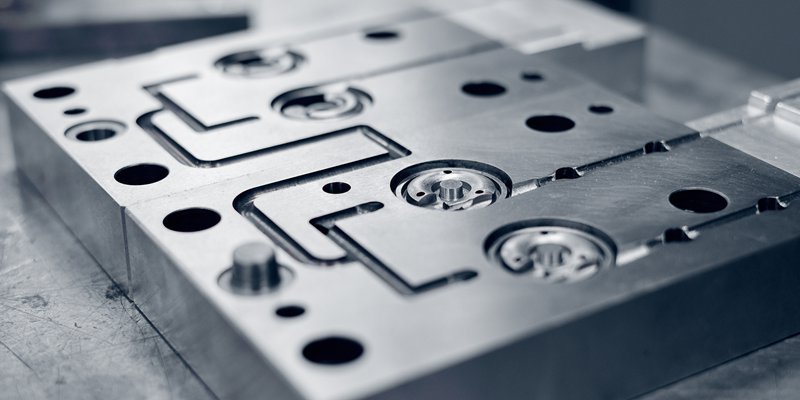- March 8, 2024
In the manufacturing industry, tooling is an important process stage for producing high-quality parts that meet specifications. Transforming raw materials into completed products requires a blend of technology, expertise, and specialized tooling equipment. But first, you must make the necessary tools. This tool manufacturing procedure has a big impact on efficiency, and precision when producing parts.
So, what is tooling? In this article, we’ll discuss its significance in manufacturing, the fundamentals of designing a tool, and different tooling types,
What is Tooling in Manufacturing?
Tooling, commonly referred to as machine tooling, is the process of shaping or forming materials to produce tolerance parts. This involves the use of jigs, molds, patterns, fixtures, and cutting tools to cut, shape, and form the parts. The equipment needed for tooling differs depending on the particular production, the type, and the size of the tooling.
It is important to note that to execute tasks correctly and maintain operations, it’s critical to have the necessary tools. Suppose the manufacturing process is ineffective without the right tools. Moreover, any changes made to the tooling technology directly affect production quantity, quality, and cost.
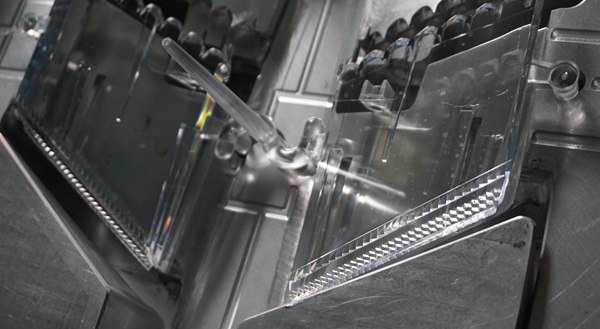
Significance of Tooling in Manufacturing
Tooling for manufacturing has a bigger impact on the mass production of goods as it can speed up production and lower the cost of operation. Proper tooling is necessary for producing high-quality items quickly.
Part Precision
In manufacturing tooling, precision engineering, and tooling go hand in hand. The accuracy and consistency of the components produced directly correlate with the precision of the tools. Whether it is for injection molded components or complex parts for aerospace purposes, the quality of the tooling affects the quality of the finished product.
Manufacturing Efficiency and Cost-Effectiveness
Streamlined manufacturing workflows result from effective tooling procedures. It is possible to produce large numbers of identical parts with little variation thanks to production tooling, particularly in methods like injection molding. Although the initial investment in production tooling may be high, the long-term cost per unit is frequently much lower than that of other manufacturing processes.
Custom Parts
Tooling makes it possible to create distinctive and customized components, which promotes innovation. Furthermore, advanced machining techniques like CNC machining, which have revolutionized tooling, now enable sophisticated designs and complex geometries.
Suitable for a Variety of Materials
Tooling is versatile and can be used with a wide range of materials, including various polymers and metals like steel and aluminum. Therefore, the ability to select appropriate materials for specific applications ensures that the finished product meets the necessary standards for strength, durability, and aesthetics.
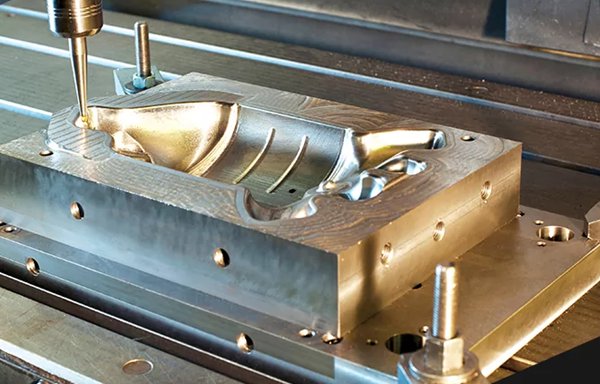
What are the Fundamentals of Tooling Design?
There are too many tooling design decisions that a product developer and their manufacturing provider must make together to discuss exhaustively. Nevertheless, it is still feasible to narrow these options down to a few distinct categories that apply to all tools, regardless of their role. Here are the common fundamentals of tooling design.
Cycle Times
During a typical production run, how frequently will the tool be used? For a pressure die-casting mold, the answer may be once every two minutes. However, the die will be exposed to extreme heat and pressure each time. The tool may be pushed to the point where it begins to wear out early or even break entirely if the lowest cycling times are achieved at the expense of increased processing speed.
Fitting the tool with an aftermarket thin film coating is one of the best ways to extend its life and speed up processing. However, these come with an additional cost, which should be weighed against increased productivity rates.
Production Volume and Tool Durability
To avoid the cost of producing multiple tools for a single production run, you need a robust tool. Consequently, a tool must be made of strong metal. A strong metal is defined as having the ability to withstand repeated stress and plastic deformation without rupturing or irreversibly changing its shape.
Long-lasting tools must be able to withstand mechanical, chemical, and thermal degradation while maintaining their tolerances. However, the costs and production time of long-lasting tools are higher than those of their temporary counterparts.
Material Used for Tooling
What kind of tooling material works best? The optimal choice for creating a production tool is whichever raw material offers the highest performance for your application in the shortest amount of time and at the lowest cost. Hence, everything relies on what you require the tool to accomplish, including how many parts it must create, how long it should last, and the preciseness required.
Naturally, not every kind of tooling raw material will be suitable for every use case. For instance, aluminum can be utilized to create perfectly fine tools and dies for plastic injection molds. However, it is inappropriate for a CNC milling cutter, because the material has low strength and hardness than steel.
Changing Frequency of Tooling
The duration required for a production machine’s tool to be changed or replaced is one efficiency factor that is frequently overlooked. Large and heavy tools like injection molds are too bulky and weighty for a human operator to handle, so they are moved by hoists and cranes, and they might take hours to replace, which influences production costs.
The fact that production workers are being paid every minute, even when no components are being produced on the assembly line, makes the tool-changing time a significant cost factor. Whenever possible, the initial design estimate should include tool-changing efficiency.
Part Precision and Tolerance
To use a tool in the production of an extremely precise finished part, it needs to be manufactured with greater care. This implies that such a tool will cost more to construct and might need to be replaced more regularly, or at the very least maintained, to uphold such tolerances. Well-made instruments can extend their useful life when re-sharpening, repairing, or calibrating.
Typical Two Types of Tooling
Based on several factors such as manufacture, material, durability, qualities, and applicability, we can divide tooling into two categories.
Soft Tooling
Soft tooling is an economical tooling technique that is often used for cast urethane molding to enable businesses to quickly make medium-to-low-volume products. Silicone is the most used soft tool material in the cast urethane industry for low-volume production runs and prototyping.
The advantage of soft tooling with flexible material requirements, it allows producers to use materials without having to worry too much about compatibility. At the same time, this approach is great for projects requiring small quantities, yet practical products with a fine finish, such as prototyping.
There are, however, several limitations with soft tooling. Tools made with soft tool materials sometimes lack the durability and wear resistance of those made with hard tooling. For instance, silicone tools mostly need to be replaced after making no more than 25 components. Moreover, after tooling is complete, it is challenging to adjust soft tools.
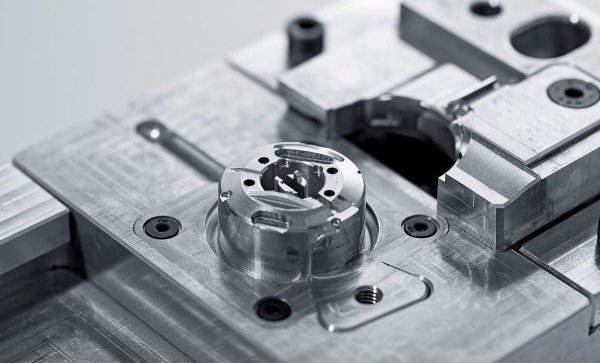
Hard Tooling
One common method of tooling for injection molding is hard tooling. Hard tools, built of resilient metals that can withstand numerous manufacturing cycles—such as steel or nickel alloys—enable producers to swiftly make large quantities of parts. Hard tooling is a better choice than soft tooling when manufacturers have tight tolerances, testing specifications, and functional standards to meet. This kind of tooling is perfect for creating precise, long-lasting parts.
However, hard tooling is far costlier and more time-consuming than soft tooling in terms of initial expenses and manufacturing lead times. Therefore, hard tools take longer to make because they need to be heat-treated, post-processed, and further machined to achieve a smooth finish.
Choose the Right One: Soft Tooling or Hard Tooling
Soft tooling or hard tooling, which should you use? Soft tooling, which uses silicone and other quick-to-assemble materials, is perfect for prototyping and short-run production.
However, hard tooling guarantees a longer mold life and consistent part quality by using sturdy metals like steel. It is best used for high-volume production.
In total, while initially more costly, hard tooling significantly lowers the cost of a part in long-term production scenarios, whereas soft tooling offers lower upfront costs during the design’s initial stages.
Different Stages of Tooling in Manufacturing
There are three main stages for tooling manufacture: prototype tooling, bridge tooling, and production tooling.
Prototype Tooling
The first step in the tooling manufacturing process is prototype tooling. This entails making molds and tools to create prototypes or small batches of products. These are generally single-use tools that are crucial for testing and confirming the design before mass production.
Bridge Tooling
Bridge tooling serves as a transitional stage between the end of prototype development and the start of production tooling. Compared to production tooling, it is less robust. It doesn’t require a large investment and can be constructed more rapidly.
Thus, bridge tooling is used by several manufacturers to facilitate the ramp-up of volume. It is more often used to refine the manufacturing process and acquire a comprehensive understanding of product design.
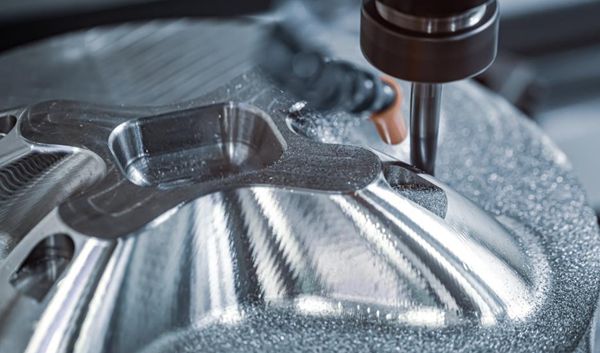
Production Tooling
The production tooling phase is where the final product is fabricated and tested. This phase is important as it sets a great ground for large-scale, mass production. As a result, this type of tooling is designed for long-term use and it ensures the tooling can produce parts to the correct specification and standards.
However, it requires a substantial investment of time and resources. Nonetheless, it guarantees efficiency and cost-effectiveness in high-volume production.
Which Processes are Used to Make Tooling?
Rapid tooling is made using two production processes: hard and soft. In a competitive market, hard tooling requires more time to create than soft tooling, which is more cost-effective. Soft tooling is typically silicone casting, milled, or 3D printed based on the needs.
Like soft tooling, hard tooling can also be produced through milling or machining. However, unlike soft tooling, hard tooling can also be made using EDM (Electrical Discharge Machining) or precision turning.
Metal Materials for Production Tooling
In manufacturing and production, the materials used for production tooling are crucial in guaranteeing lifespan and performance. Hardened metals such as tool steel, aluminum, and alloys are frequently utilized because of their exceptional wear resistance, durability, and capacity to handle the demands of high-volume production.
Tool steel is a common material of choice for making sturdy molds and dies due to its outstanding hardness, toughness, and machinability. Furthermore, innovative materials with special qualities, such as resistance to high temperatures, are lightweight and corrosion-resistant, like composite tooling, and are suitable for specific industrial applications.
Considerations and Tips When Machining Tooling
The type of tooling machined often depends on the specific needs of the project. Below are some considerations when machining tooling.
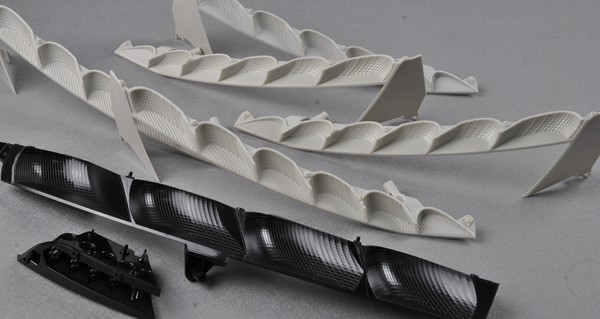
Part Geometry
When working with not very complex geometries, soft tooling is a better choice due to its cost-effectiveness and quicker turnaround times. Soft tooling methods, such as 3D printing or CNC machining, make redesigning simpler and enable the creation of complex tools within hours or days.
Tooling Lifespan
Another crucial factor to consider when machining tooling is the tool’s lifespan. Hard tooling is the best option if you’re looking for durability. Soft tools are effective for approximately 25–50 injection molding shots and have a shorter lifespan. Conversely, hard tools, made from metal, are more temperature-resistant than soft tooling materials, lending to a longer lifespan of thousands of shots.
Material Selection
Another factor to consider when machining tooling is the type of material used for the process. The type of material to be machined, the production volume, and the necessary tool lifespan should all be taken into consideration when selecting the right tooling material. Some materials last longer and are more durable, albeit more expensive.
What Factors Affect the Cost of Tooling?
Although numerous factors affect tooling prices, they are all connected to the type of material being worked and the tool’s specification.
Part Specification
The cost of tooling also depends on the number of operations the CNC machine needs to perform. Simple cuts or bores require fewer tools. Twisting, boring, and intricate cutting will need more tools.
Besides, the parts may need certain surface treatments like polishing or features that other tools can grasp, such as gaskets. Tooling prices will rise with each additional specification step.
Applications
Industries such as medical, aerospace, and defense have very strict specifications for high-strength parts. Tools with higher hardness are required to conduct cuts on materials like titanium and hardened steel. Understandably, these tools cost more than cutting softer materials.
Quality of Tools
One important issue that has a direct impact on tooling costs is the quality of the tools used in manufacturing. Superior materials and more exacting engineering and manufacturing techniques are usually needed to produce high-quality tooling, which raises their initial costs. On the other hand, there may be significant long-term savings and efficiencies from this quality investment.
Get Started with Rapid Tooling at WayKen
At WayKen, you can access tooling solutions effectively and affordably. Our rapid tooling services are designed to accelerate your product development process by providing you with quick access to advanced tooling options. We also provide one-stop CNC milling, turning, 3D printing, silicone molding, and surface finishing services. Contact us today to get one-on-one support.
Conclusion
Tooling involves converting raw materials into finished parts by employing specialized machinery and tools. To create a product quickly and efficiently, the quality of these tools is important in manufacturing.
FAQs
What are the basic features of a tool?
The basic features of a tool in manufacturing include:
- Core half
- Cavity half
- Runner
- Ejector system
- Cooling lines
- Side actions
What is the rapid tooling?
Rapid tooling allows producers to obtain parts rapidly and affordably before mass production tooling begins. Mold materials, hand-load inserts, and a supplied mold base need to be considered for this process.
How much does manufacturing tooling cost?
The cost of tooling varies based on the type of product being created. Tooling costs for a company can range from 3% to 6% of the total costs. Tools are generally considered consumable since all tooling eventually needs to be replaced.

